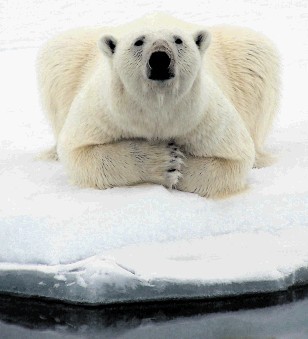
Polar bears may be at further risk from climate change because stronger winds projected in the Arctic could damage their ability to hunt by smell, research suggests.
The apex predator is already threatened by melting sea ice destroying hunting grounds, and a new study of how the bears use their nose to seek prey questions whether the technique could be affected by the weather.
A team at the University of Alberta in Canada found that the massive carnivores travel “crosswind” to give them a better chance of sniffing out prey before they home in for the kill.
The scientists found that the technique was most frequently used when winds were slow and “it is easier to localise the source of a certain smell”, and at night when bears are less able to rely on sight.
Lead author Ron Togunov said: “Wind speeds in the Arctic are projected to increase, potentially making olfaction more difficult.
“It is important to understand how polar bear hunting success will be affected by these changing conditions.”
The Alberta paper, published in the Scientific Reports journal, looked at the way polar bears hunted ringed seals, a typical prey.
The researchers used satellite data collected from 123 bears in the remote and huge Hudson Bay in north-east Canada.
Mr Togunov added: “Predators search for prey using odours in the air, and their success depends on how they move relative to the wind.
“Travelling crosswind gives the bears a steady supply of new air streams and maximises the area they can sense through smell.”
Co-author Professor Andrew Derocher said the best conditions were on winter nights, adding: “Crosswind search was most frequent when winds were slow, when is is easier to localise the source of a certain smell, and at night when bears are relatively active and when vision is less effective, so bears rely more heavily on their sense of smell.”
A separate study in December revealed that a third of the world’s polar bears could disappear in the next 40 years because of melting Arctic sea ice.
There is a 71% likelihood that polar bear numbers will be reduced by more than 30% in three generations, a team led by Dr Eric Regehr from the US Fish and Wildlife Service found.
Loss of sea ice due to climate change has a direct impact on the ability of polar bears to feed and survive.
The bears need platforms of ice to reach their prey of ringed and bearded seals. Some sea ice lies over more productive hunting areas than others.
Writing in the Royal Society journal Biology Letters, the USFWS team calculated that the current population of 26,000 bears could be cut to around 17,300 over 35 to 41 years.